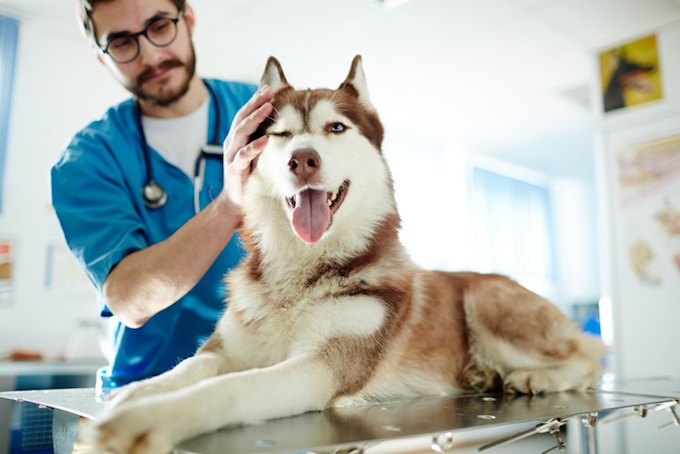Narrowed bronchi in dogs happens when there are problems with the trachea. The condition can cause a chronic cough and breathing problems.
Unfortunately, certain breeds seem to be predisposed to the condition, including Miniature Poodles, American Cocker Spaniels, and English Springer Spaniels.
Additionally, middle-aged and more senior dogs develop the condition more often than younger pups.
Technically, the condition is also known as bronchiectasis in dogs.
If you see the signs of the condition in your dog, then get to a veterinarian for a proper diagnosis and treatment.
Here’s what you should know about the symptoms, causes, and treatments for the condition.
Symptoms of Narrowed Bronchi in Dogs
The condition produces a number of symptoms. For instance, some of the most common symptoms include:
- Chronic coughing
- Dry cough
- Coughing with blood
- Breathing problems
- Nasal discharge
- Fainting
- Fever
- Avoiding exercise
- Lethargy
- Breathing rapidly
Causes of Narrowed Bronchi in Dogs

The cause of the condition can be a number of things. For example, some of the common causes of the condition include:
- Inhaling smoke
- Inhaling environmental toxins
- Heart disease
- Inhaling chemicals
- Neoplasia (of the lungs)
- Aspiration pneumonia
- Obesity
- Infections
- Respiratory problems
Additionally, the condition can be congenital. This means that a dog is born with it. Unfortunately, the following breeds are most predisposed to the condition:
- Miniature Poodles
- West Highland White Terriers
- English Springer Spaniels
- American Cocker Spaniels
- Siberian Huskies
Treatments for Narrowed Bronchi in Dogs
Firstly, your vet will ask about your dog’s symptoms. Secondly, your vet will ask about your dog’s full medical history. This will include breed-specific problems.
Thirdly, your vet will ask about any recent circumstances or incidents that could have caused the condition. For example, has your dog recently been exposed to environmental toxins or smoke?
Fourthly, your vet will carry out a full physical examination. Blood and urine tests will be taken. Additionally, your dog’s blood gas levels will be analyzed.
Also, X-rays of your dog’s chest and bronchial tubes can help to diagnose the condition.
Unfortunately, severe cases of the condition will require that your dog stays in hospital for a few days. This is so that your dog can undergo intravenous fluid therapy, oxygen therapy, and have any fluid removed from their lungs.
Additionally, antibiotics can help fight off any infections. As always, if your vet prescribes your dog any medicine, make sure to stick to the correct dose and frequency instructions. Also, complete the full course of medicine.
Generally, early treatment of the condition produces good results. Although your dog might still keep their persistent cough.
While recovering at home it is important to provide your dog with a quiet and calm environment. Also, keep your dog away from anything that could aggravate the condition, such as smoke and environmental toxins.
Finally, keep up regular visits with your vet to monitor your dog’s recovery.
Have you ever cared for a dog who suffered from this condition? How did your vet help your dog recover? Let us know in the comments section below.




